New Orleans << AWR lee uhnz, awr LEENZ, or AWR luhnz >> (pop. 383,997; met. area pop. 1,007,275) is one of the world’s busiest ports and the largest city in Louisiana. It is also a business, cultural, and industrial center of the southern United States. New Orleans lies along the Mississippi River, about 100 miles (160 kilometers) north of where the river flows into the Gulf of Mexico. This location helped make the city a great shipping center.
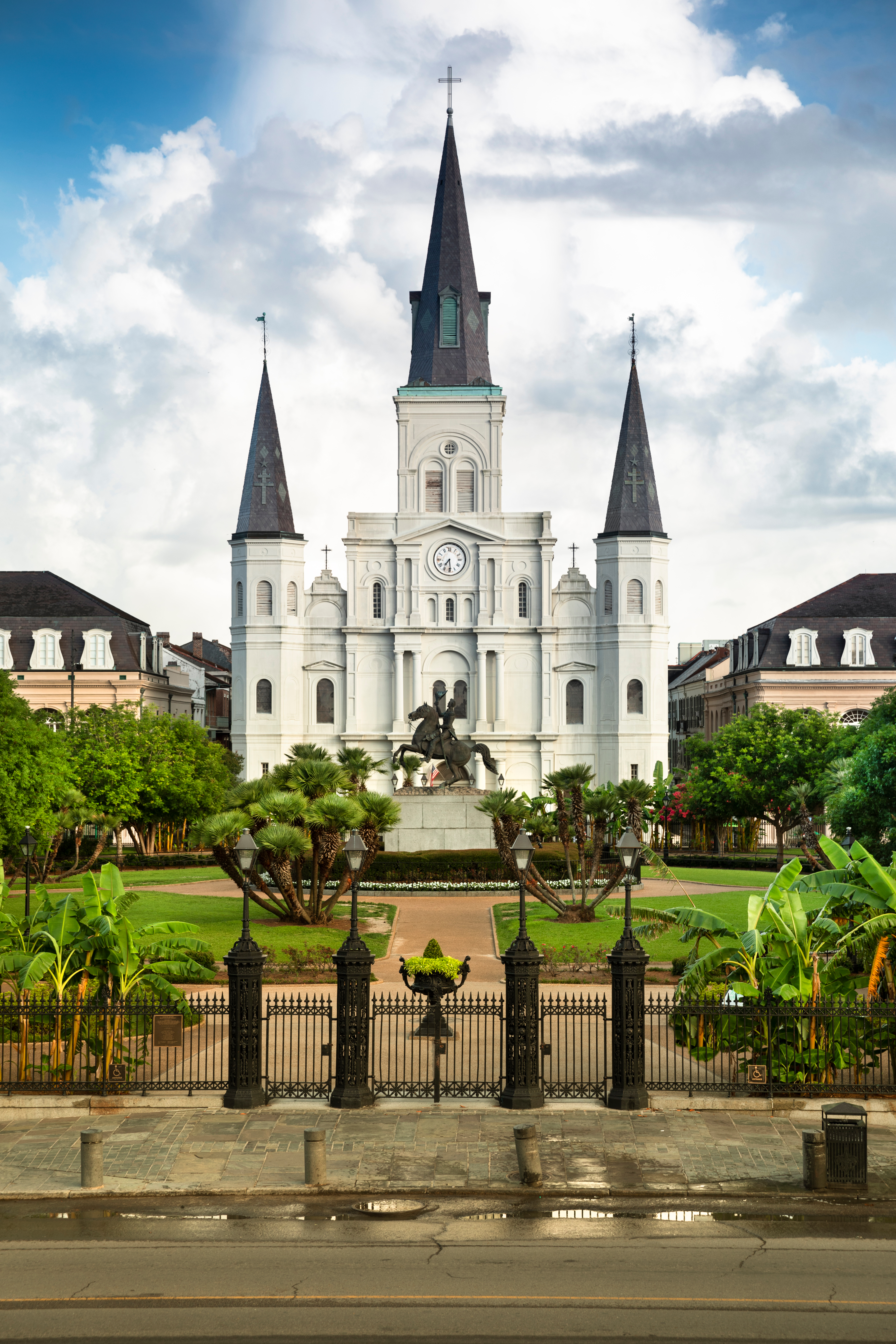
New Orleans has long been a popular city with tourists. The largest crowds come for the annual Mardi Gras celebration, with its parades and other festivities. Tourists are also attracted by the city’s historic French Quarter, much of which has the architectural charm of an old European town. In addition, a large number of visitors come to New Orleans to hear top jazz musicians perform in the city that helped give birth to jazz in the early 1900’s.
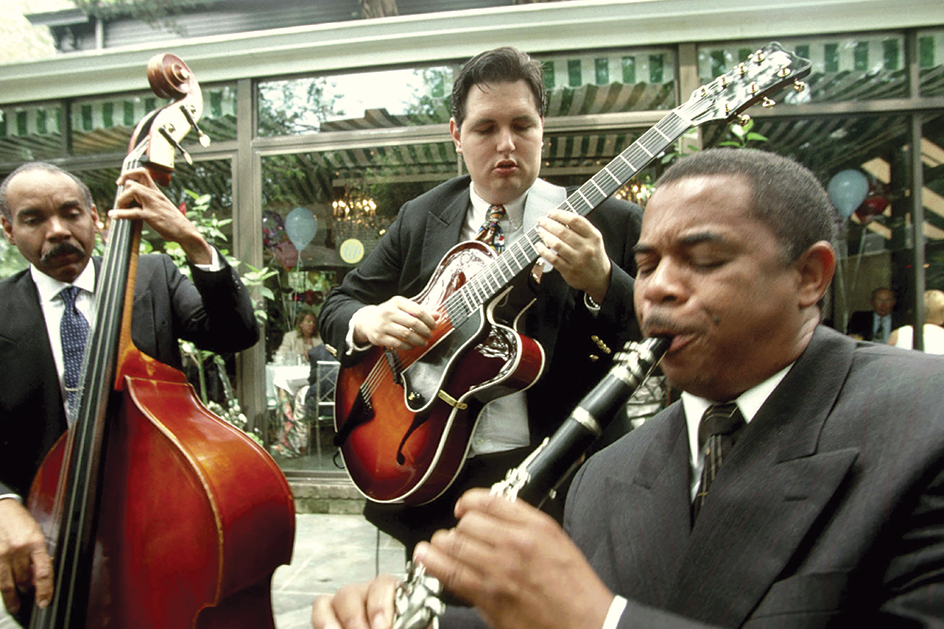
New Orleans is the South’s oldest major city. It was founded in 1718 by Jean Baptiste le Moyne, Sieur de Bienville. Bienville was governor of the French colony of Louisiana. He named New Orleans after Philippe, Duke of Orleans, who ruled France for King Louis XV, then a youth. The flags of France, Spain, the Confederate States, and the United States have flown over the city.
In August 2005, Hurricane Katrina struck the Gulf Coast, causing widespread destruction and loss of life. For weeks, floodwaters covered much of New Orleans. Of the approximately 1,500 Louisianians who died because of the hurricane, most were from New Orleans. Hundreds of thousands of people left the city in the days before and after the storm. Many Orleanians who left the city returned in the months and years that followed. The city’s 2020 census population of 383,997 was about 80 percent of the total before the storm.
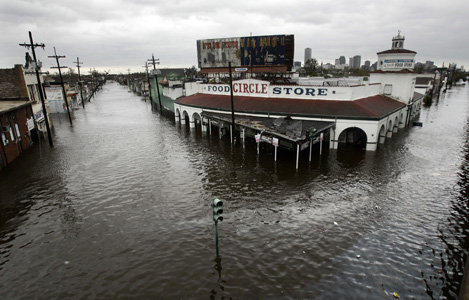
The city
New Orleans occupies all of Orleans Parish and has the same boundaries as the parish. In Louisiana, counties are called parishes.
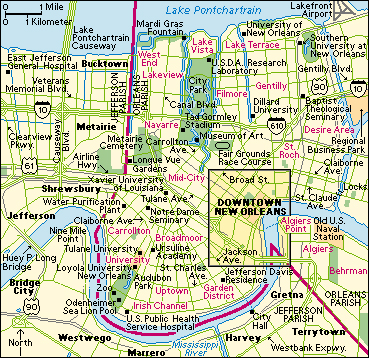
New Orleans is often called the Crescent City because its original section—the French Quarter—lay along a giant curve in the Mississippi River. Today, the main part of the city lies between the river on the south and Lake Pontchartrain on the north.
Downtown New Orleans borders the east bank of the Mississippi. Most of the city’s residential districts lie west, north, and east of the downtown area. The rest occupy a finger-shaped area on the river’s west bank. This area, known as Algiers, is the only part of New Orleans on the west bank.
In the late 1800’s, the federal government built about 130 miles (209 kilometers) of earthen barriers, called levees, around the city to protect it from flooding. The longest levees lie along the Mississippi River and Lake Pontchartrain. Following the construction of these earthworks, the city installed a massive pumping system to provide drainage during rainstorms. The pumps helped dry out the soils, and much of New Orleans sank below sea level. The combination of levees and pumps transformed the local landscape and led to suburban development in low areas.
Downtown New Orleans
includes the French Quarter and the main business district. This area lies on higher ground than much of the city and suffered little damage from Hurricane Katrina in 2005. The French Quarter was named after the French colonists who first settled the area. It is also called the Vieux Carré << vee yoo cair RAY >> , meaning Old Square. Most buildings in the French Quarter, however, look more Spanish than French. Fires swept through the area in 1788 and 1794. At that time, Spain ruled Louisiana, and so the rebuilding favored the Spanish style of architecture. This style can be seen in many homes and other buildings with their landscaped patios and graceful balconies of lacy iron grillwork.
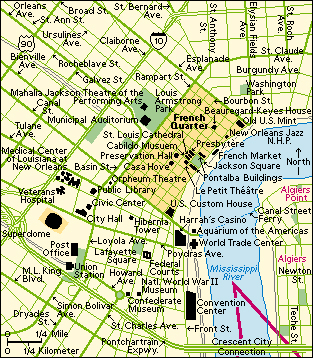
Several of New Orleans’s most historic structures border Jackson Square in the heart of the French Quarter. One landmark, the St. Louis Cathedral, was completed in 1851. It stands between the Presbytere and the Cabildo. The Presbytere was built from 1794 to 1813. It was first used as a commercial building and later became a courthouse. The Cabildo, begun in 1795 and completed in 1799, was the seat of the Spanish government in the Louisiana Territory. The United States acquired the territory from France in the Louisiana Purchase of 1803. The official transfer of the land took place in the Cabildo. The Presbytere and the Cabildo are now museums. Fire damaged much of the Cabildo in 1988. However, the museum has been fully restored.
The Pontalba Buildings, two block-long apartment buildings, face each other across Jackson Square. They were built as luxury town houses in 1849 and are among the city’s most fashionable residences. The French Quarter is also known for its nightclubs on Bourbon Street and antique shops on Royal Street. It also has a number of restaurants famous for the local cuisine, which incorporates elements of African, French, Native American, and Spanish cooking.
New Orleans’s main business district lies west of the French Quarter. Large hotels, some of them converted from department stores, stand along Canal Street, the district’s main thoroughfare. This broad boulevard is 171 feet (52 meters) wide. The 33-story World Trade Center of New Orleans rises at the south end of Canal Street. In the early 2020’s, developers transformed the building into a hotel and condominiums.
Many modern high-rise office buildings and hotels line Poydras Street between the riverfront and the gigantic Caesars Superdome, formerly the Louisiana Superdome. The Superdome, one of the world’s largest indoor stadiums, is used for sports events, conventions, and trade shows. City Hall stands in the nearby Civic Center.
Residential districts.
West of downtown New Orleans is a large residential area known as Uptown. It includes some of the city’s oldest neighborhoods. The most famous is the Garden District, with its majestic old mansions and beautiful gardens. Americans who came to New Orleans after the Louisiana Purchase in 1803 developed the Garden District. Between the Garden District and the river lies the Irish Channel. This working-class neighborhood is filled with traditional New Orleans houses known as shotguns (narrow, one-room-wide houses), shotgun doubles (two attached shotgun houses), and camelbacks (a shotgun with an upper level added at the rear). Also in Uptown are Tulane University, Loyola University New Orleans, and Audubon Park.
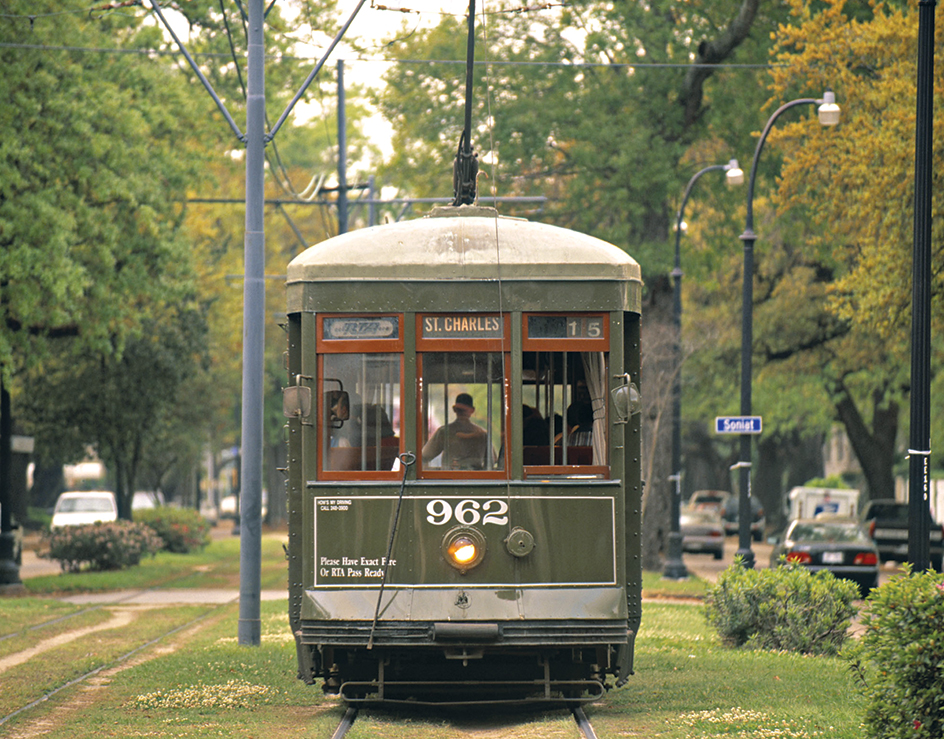
City Park and a number of attractive communities along the Lake Pontchartrain shore cover much of northern New Orleans. City Park occupies 1,300 acres (525 hectares) and is one of the nation’s largest urban parks. The New Orleans Museum of Art is in the park. Lakeview and Pontchartrain Park are among the older lakefront communities. They were built in the mid-1900’s, after the former marshlands were protected by levees and pumped dry. They both suffered serious flooding when Hurricane Katrina caused floodwalls to collapse in 2005. New Orleans Lakefront Airport and the University of New Orleans also lie on the lakefront.
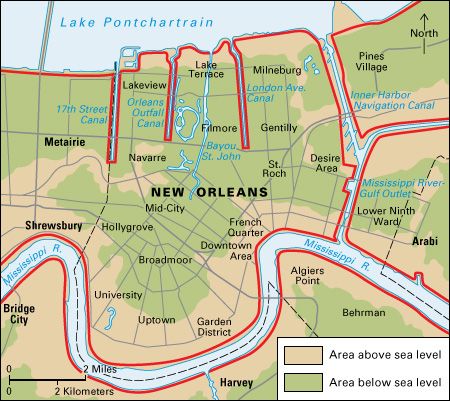
Most of New Orleans’s newest neighborhoods have been built in the northeastern part of the city, commonly called New Orleans East. Large-scale development began there during the 1960’s. New Orleans East subsided, or sank, after its development, and the area experienced serious flooding due to Hurricane Katrina.
The metropolitan area
of New Orleans-Metairie extends over seven parishes—Jefferson, Orleans, Plaquemines, St. Bernard, St. Charles, St. James, and St. John the Baptist. About a million people, approximately 20 percent of Louisiana’s people, lived in this area at the time of the 2020 census. Fast-growing suburbs have sprung up along the Mississippi between New Orleans and Baton Rouge with the development of large industries. Suburbs north of Lake Pontchartrain have grown rapidly. Hurricane Katrina accelerated suburban growth because many city residents moved to nearby communities.
People
African Americans make up over half of New Orleans’s population. White people make up about one-third of the city’s people. Hispanic Americans and people of Asian descent account for most of the remainder.
Many white Orleanians are descendants of European immigrants who came to the city to find opportunity and freedom during the 1800’s and early 1900’s. Many other Orleanians arrived from Latin American countries during the 1900’s. Large numbers of Black people have lived in the city since enslaved people were first brought to the area in the early 1700’s. In addition, many free Black people immigrated from the Caribbean region, especially the Dominican Republic, from the late 1700’s to the mid-1800’s.
During the last half of the 1900’s, the New Orleans metropolitan area experienced a shift in population common to other major urban centers in the United States. A large number of middle-class white families moved from the city to the suburbs. As a result of this population shift, wealthy white people and poor Black residents formed the largest groups in New Orleans.
Ethnic groups.
Nearly all the early African American residents of New Orleans came from Africa as enslaved people. They worked on farms and plantations near the city or in the city itself. In the early 1900’s, African American musicians made New Orleans a world-famous center of jazz. Black jazz bands still follow a New Orleans custom and play as they march in funeral processions to and from cemeteries. See Jazz (Early jazz).
More than 325,000 African Americans lived in New Orleans before Hurricane Katrina struck in 2005. Many of them were poor and lived in mainly Black communities near the downtown area. However, a sizable African American middle class lived mainly in eastern New Orleans. Many neighborhoods damaged the most by the 2005 storm were largely Black and poor. After the storm, about 100,000 African Americans left New Orleans and settled in other cities.
Other groups of Orleanians include those of Cuban, French, German, Irish, Italian, Honduran, Mexican, Polish, or Vietnamese ancestry. Many residents who came from Latin America live southeast of the downtown area.
The descendants of New Orleans’s early African, French, Native American, and Spanish residents are known as Creoles. The term Creole comes from a Spanish word meaning native to the place. The Creole influence is still strong in New Orleans. For example, on All Saints’ Day (November 1), a citywide holiday that honors the dead, many Orleanians follow the Creole tradition of going to the cemetery in family groups. Creole cooking, a spicy blend of African, French, Native American, and Spanish dishes, remains popular in restaurants throughout New Orleans.
Housing.
Nearly half of New Orleans’s families own their homes. Most of the rest rent apartments. New high-rise apartment buildings stand in various parts of New Orleans. But about half the city’s housing was built before 1950. In fact, much of the housing dates from the 1800’s. Many of the older homes, especially those in the French Quarter and the Garden District, have been beautifully restored. But much other housing, greatly in need of repair, is neglected because the owners cannot afford the high cost of repairs. Yet, the traditional shotguns and doubles represent a local architectural tradition and contribute to the city’s unique look. 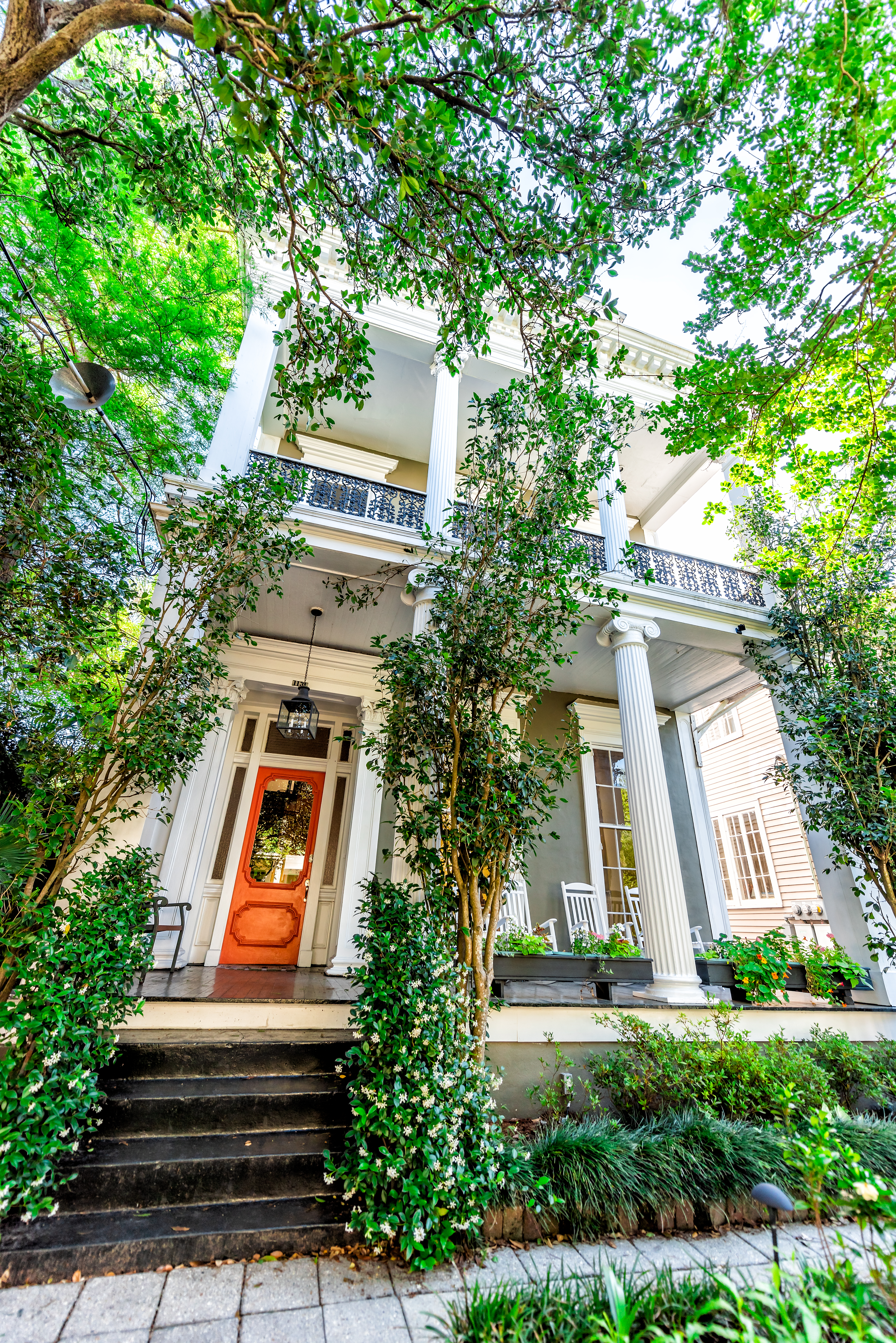
Education.
The Orleans Parish School Board, which consists of seven elected members, supervises the public school system in New Orleans. The New Orleans metropolitan area also has many Roman Catholic schools and a number of other church-supported and private schools.
New Orleans schools suffered a major disruption from Hurricane Katrina. Most of the city’s schools were forced to close. In the following years, many public schools that had closed reopened as charter schools run by public-private partnerships. A state organization called the Recovery School District (RSD) took over some other public schools. In 2014, RSD became an all-charter district. By 2018, however, the schools were reunited under the Orleans Parish School Board.
The University of New Orleans, the city’s largest university, is part of the Louisiana State University system. Tulane University is New Orleans’s oldest institution of higher learning. It was founded in 1834. Other universities and colleges in New Orleans include Dillard University; Loyola University New Orleans; New Orleans Baptist Theological Seminary; Notre Dame Seminary Graduate School of Theology; Southern University at New Orleans; University of Holy Cross; and Xavier University of Louisiana.
The arts.
New Orleans is a leading cultural center of the South. The New Orleans Opera Association, the New Orleans Ballet Association, and the Louisiana Philharmonic Orchestra perform at various locations in the city. The Louisiana Philharmonic is completely owned by its musicians. Le Petit Théâtre du Vieux Carré is one of the city’s best-known professional theater companies.
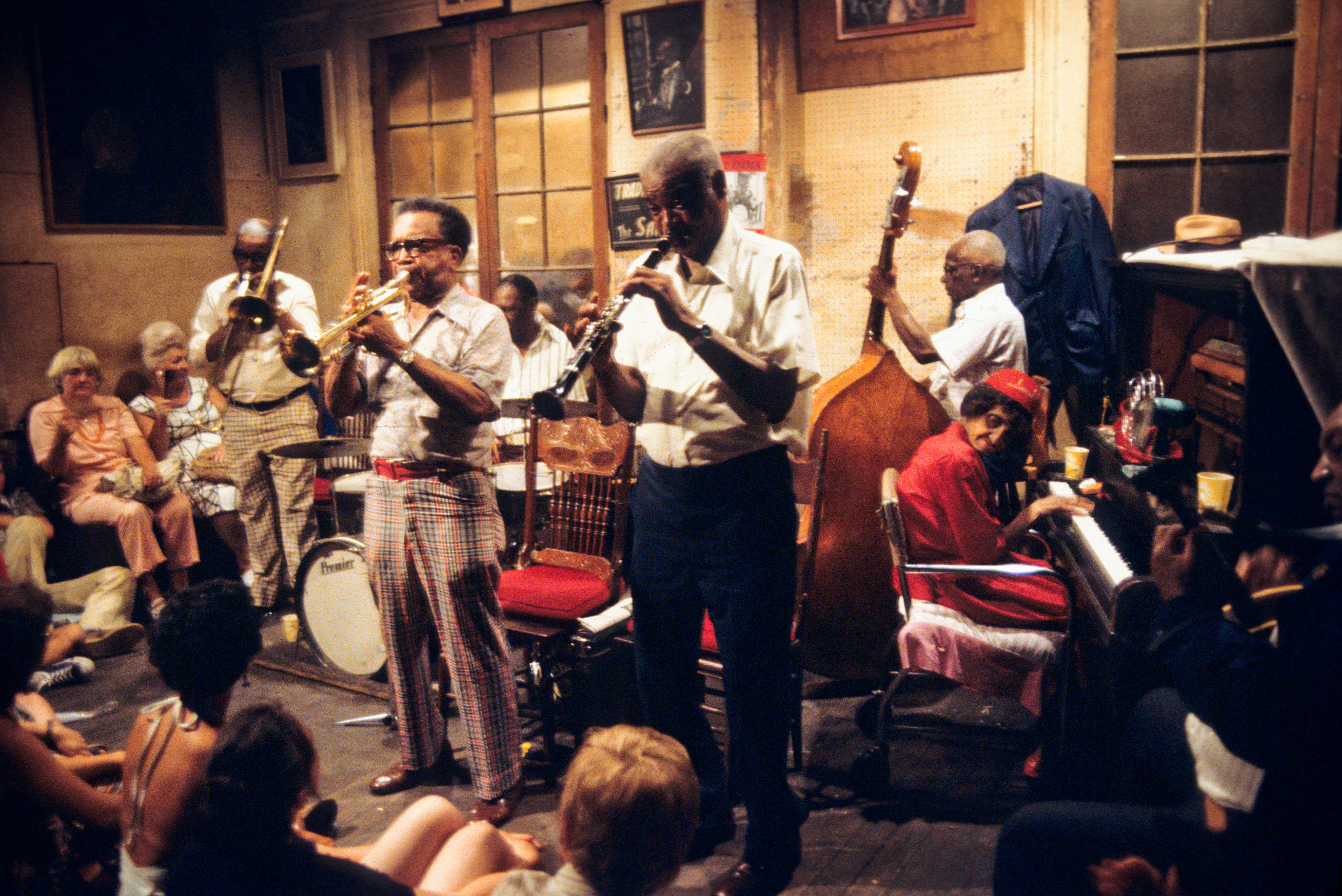
New Orleans has been known for its jazz ever since the city helped give birth to the music in the early 1900’s. Black musicians and a number of white musicians helped to develop jazz in the bars and nightclubs on Basin, Rampart, and other streets both inside and outside the French Quarter. Today, old New Orleans-style jazz is still played in many places in the city. One of the most famous places is Preservation Hall, a small building where fans sit on wooden benches or stand to hear jazz concerts.
Libraries and museums.
The New Orleans Public Library operates a main library and several branches. Tulane University has an outstanding collection of books on Louisiana history. Tulane is also the home of the Amistad Research Center, which preserves books and other materials about African American life and culture. In addition to public and university libraries, the Historic New Orleans Collection is one of the finest repositories of material about the development of Louisiana and the South.
The New Orleans Museum of Art has fine collections of art from France and the Americas. The Louisiana State Museum operates eight historic buildings in New Orleans, including the Cabildo; the Presbytere; Madame John’s Legacy, a beautifully restored house dating from the late 1700’s; and the New Orleans Jazz Museum. Other New Orleans museums include the Pitot House, a former plantation; the Confederate Memorial Hall Museum, which features Civil War artifacts; and the National World War II Museum.
Jean Lafitte National Historical Park and Preserve includes a large area of wetlands and the site of the Battle of New Orleans. A visitor center features displays about the battle, which was the last clash of the War of 1812 (1812-1815).
Recreation.
New Orleans has dozens of parks. The two largest, City Park and Audubon Park, were plantations during the 1800’s. City Park includes a botanical garden, an urban forest, athletic fields, and two stadiums. Audubon Park’s attractions include a large zoo. The Audubon Aquarium of the Americas, a large aquarium, stands in the French Quarter along the Mississippi River. Lake Pontchartrain and other nearby lakes are popular for boating, fishing, and sailing. The Bayou Sauvage National Wildlife Refuge in eastern New Orleans is an appealing outdoor attraction.
The city has two major league professional teams. It is the home of the New Orleans Saints of the National Football League and the New Orleans Pelicans of the National Basketball Association.
Annual events.
Every year, large numbers of visitors attend New Orleans’s Mardi Gras festival in February or March. The celebration climaxes the city’s carnival season, which begins in January. Mardi Gras activity lasts about two weeks and ends on Shrove Tuesday, the day before the Christian observance of Lent starts. It features parades and elaborate costume balls sponsored by private carnival organizations known as krewes. On Shrove Tuesday, also called Mardi Gras Day, the king of the Rex krewe leads a parade of several hundred floats. Brightly costumed riders on the floats toss beads, toys, and imitation gold coins called doubloons to the crowds. 
Another popular annual event in New Orleans is the Spring Fiesta, held in March, April, or May. It includes guided tours through charming old houses in the French Quarter and the Garden District. The Jazz and Heritage Festival is another popular spring event. New Orleans hosts the annual Sugar Bowl football game on or near New Year’s Day. The game, held in the Superdome, features two of the nation’s top college teams.
Social problems.
The U.S. Census Bureau reported that, in the late 2010’s, about one-fourth of the city’s families were poor. Most of the city’s poor had little education and worked at low-paying jobs or were unemployed. Deteriorating housing in low-income areas was also a serious problem.
Economy
New Orleans has a diverse economy. Service industries, including health care, finance, and tourism, provide employment to most of the area’s workers. Factories produce aerospace equipment, processed foods, and petrochemicals. Huge amounts of cargo are loaded and unloaded at the city’s modern port facilities.
Trade and finance.
The Port of New Orleans handles millions of tons of cargo a year. Hundreds of ships from around the world dock at the busy port annually. The chief exports include petroleum products and grain and other foods from the midwestern United States. The leading imports include aluminum, coffee, forest products, rubber, petroleum, and steel. The port’s heaviest trading is with Latin America. 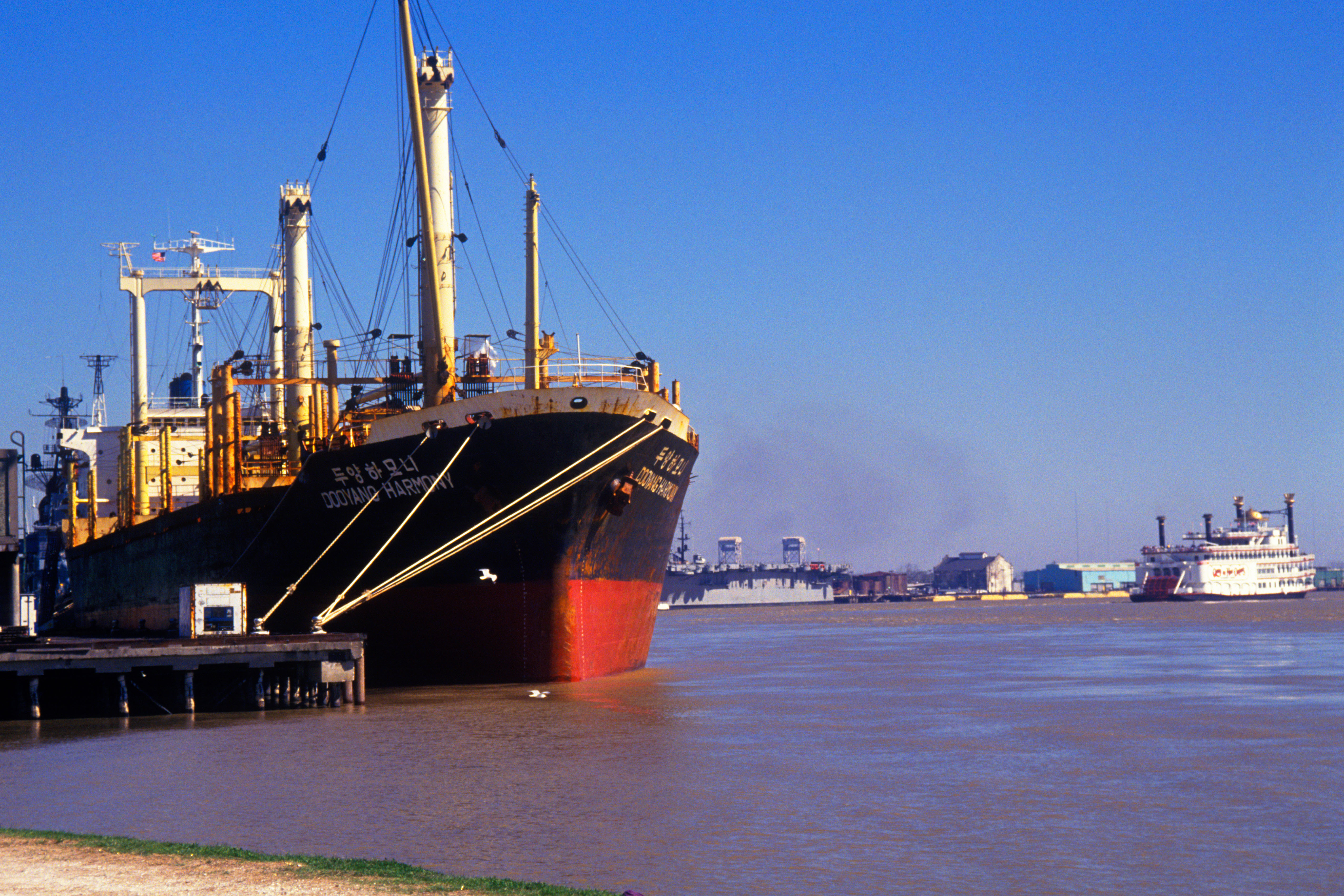
New Orleans has been a busy port for barges. The barges use the nation’s two main inland waterways, the Mississippi River and the Gulf Intracoastal Waterway, which meet at New Orleans.
The New Orleans metropolitan area has been one of the South’s chief centers for hotels, restaurants, and retail and wholesale trade. The New Orleans area also has been a financial center. Many commercial banks and savings and loan associations have operated in the area. Their loans helped finance business expansion projects and other civic developments. The Sixth Federal Reserve District Bank operates a branch bank in New Orleans.
Industry.
The New Orleans metropolitan area has hundreds of manufacturing plants. At the Michoud Assembly Facility, several companies have produced equipment for the United States space program. Michoud made the Saturn V rocket that launched the Apollo 11 astronauts to the moon in 1969. In the 1980’s, a huge new industrial center, the Almonaster-Michoud Industrial District (now called the New Orleans Regional Business Park), was begun. It was built around the Michoud Assembly Facility. Other leading industries in the area have included the making of food products, petrochemicals, petroleum products, and primary metals.
Transportation.
Barges and oceangoing ships dock at wharves on the Mississippi River and the Inner Harbor Navigation Canal. The Navigation Canal links the Mississippi and Lake Pontchartrain. From 1968 to 2009, the 76-mile (122-kilometer) Mississippi River-Gulf Outlet (MRGO) gave shippers a 44-mile (71-kilometer) short cut between New Orleans and the Gulf of Mexico.
During the 2005 hurricane, storm surges (rapid rises in sea level produced when winds drive ocean waters ashore) moved rapidly up these artificial waterways, knocking down levees and flooding low-lying neighborhoods. In 2009, the U.S. Army Corps of Engineers constructed a barrier to close the MRGO shipping channel.
Louis Armstrong New Orleans International Airport, in the nearby city of Kenner, serves many commercial airlines. Private aircraft use New Orleans Lakefront Airport. Many trucking companies and several passenger and freight rail lines also serve the city. The Lake Pontchartrain Causeway, one of the world’s longest bridges, extends about 24 miles (39 kilometers). It spans the lake and links New Orleans and its northern suburbs.
Communication.
New Orleans has one major newspaper, The New Orleans Advocate. Several television stations and a number of radio stations serve the city. Cable television systems and internet providers serve communities throughout the region.
Government
The city has a mayor-council form of government. Voters elect the mayor and the seven members of the City Council to four-year terms. The mayor may serve any number of terms but not more than two in a row.
The mayor appoints a chief administrative officer to help direct the city government. The mayor also plans civic improvements. The council makes the city’s laws. The mayor may veto bills passed by the council. However, any bill the mayor vetoes may still become law if at least five council members vote to repass it.
A sales tax is the city government’s largest source of local revenue. But New Orleans, like other big cities, does not raise enough money from local taxes to pay for the increasing costs of services and improvements. As a result, the city has depended on the state and federal governments for about one-third of its revenue.
History
Chickasaw, Choctaw, and Natchez people lived in what is now the New Orleans area before Europeans arrived. In 1682, the French explorer René-Robert Cavelier, Sieur de La Salle, sailed down the Mississippi River from the Great Lakes region. He claimed the entire Mississippi Valley for France.
French and Spanish rule.
Sieur de Bienville founded New Orleans in 1718. In 1722, he made it the capital of the French colony of Louisiana, which covered the central third of the present-day United States.
In 1762, King Louis XV of France gave Louisiana to his cousin, King Charles III of Spain. The French Orleanians disliked the first Spanish governor of Louisiana, Antonio de Ulloa, and drove him from the city in 1768. But in 1769, soldiers arrived from Spain and restored Spanish rule in New Orleans.
The worst urban fire in what is now Louisiana broke out in New Orleans on March 21, 1788. It started in a house on Chartres Street and destroyed over 850 buildings. Rebuilding was underway when a fire swept through 200 more structures in 1794.
In 1800, France secretly regained the Louisiana region from Spain but did not reveal the fact until March 1803. The next month, France sold Louisiana to the United States. On November 30, in preparation for the region’s official transfer, the French took down the Spanish flag that still waved over New Orleans and raised the French flag. On December 20, the American flag became the third flag to fly over the city in less than a month.
The early 1800’s.
In 1805, New Orleans was incorporated as a city. Louisiana joined the Union in 1812, and New Orleans became the state capital. Also in 1812, the steamboat New Orleans arrived at New Orleans after sailing down the Ohio and Mississippi rivers from Pittsburgh. It was the first steamer to navigate the Mississippi. River trade soon boomed at New Orleans. 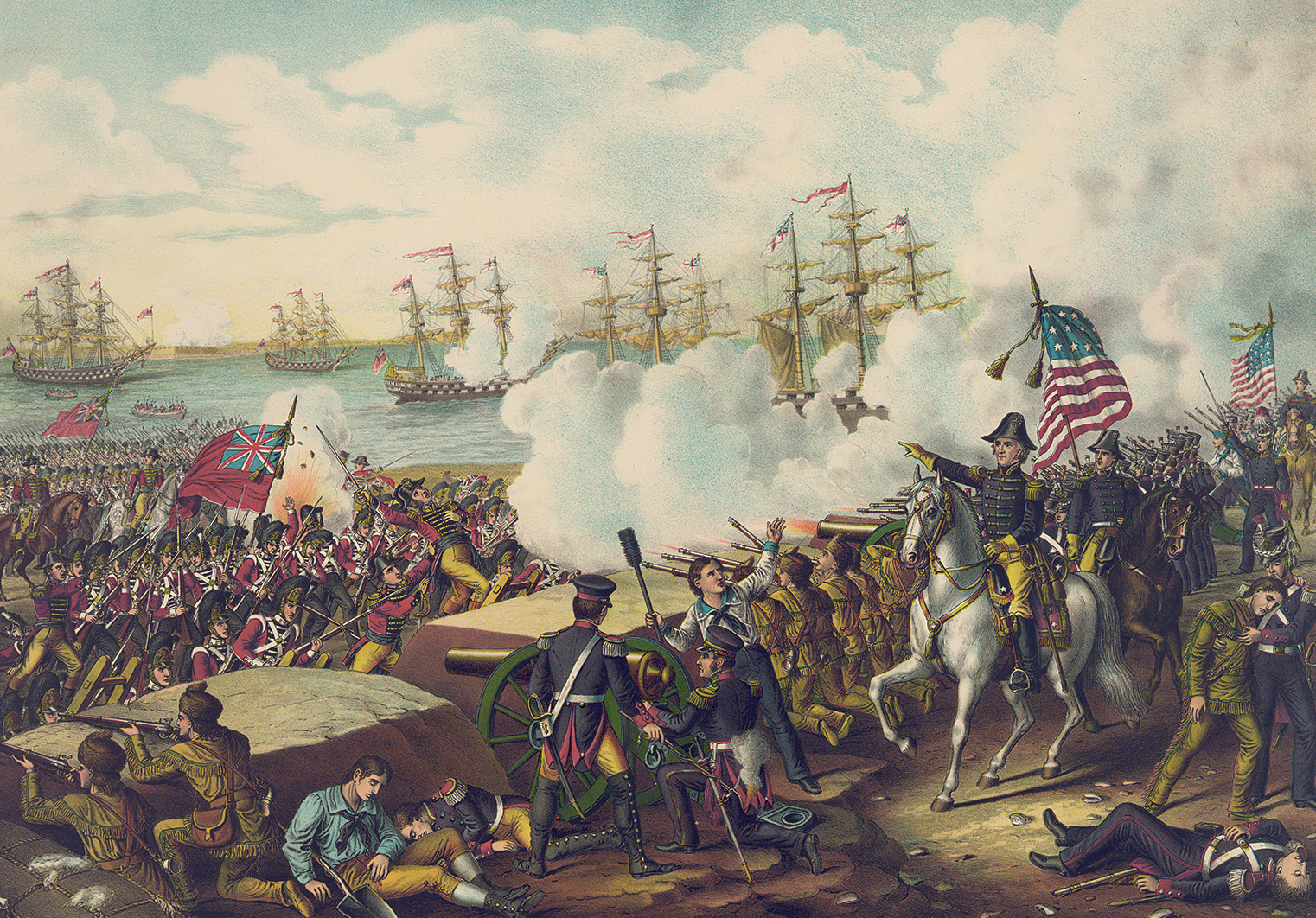
During the War of 1812, British troops tried to capture New Orleans. The British sought the aid of Jean Laffite, leader of a pirate band based near the city. But Laffite joined the American forces that were defending New Orleans. General Andrew Jackson commanded the U.S. troops. Jackson’s army and Laffite’s pirates defeated the British in the Battle of New Orleans on Jan. 8, 1815. See War of 1812 (“The needless battle”).
After the war, river trade brought increasing wealth to New Orleans. The city thrived as a cotton port and a center for trading enslaved people. The state capital was moved to Donaldsonville in 1830. But New Orleans again served as the capital from 1831 until 1849, when Baton Rouge became the capital. New Orleans held its first Mardi Gras celebration in 1838. 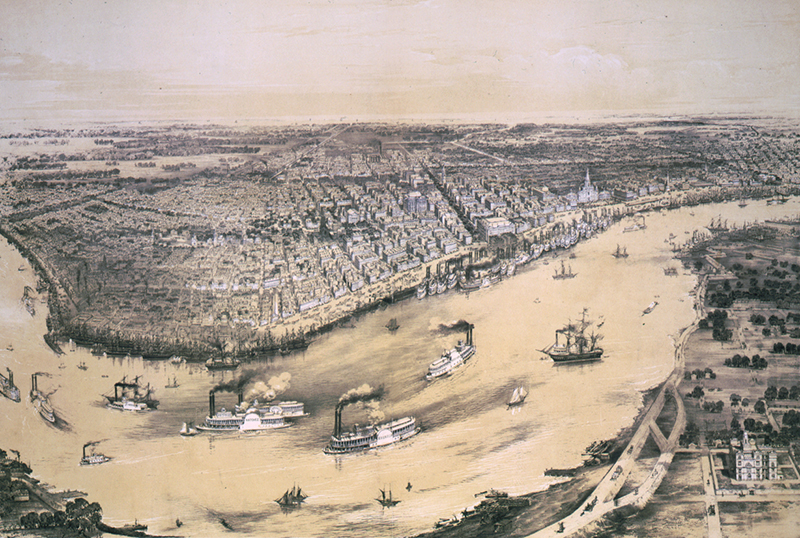
The Paris of America.
By 1840, New Orleans had a population of 102,193 and was the nation’s fourth largest city. In the mid-1800’s, it attracted thousands of immigrants from Germany and Ireland. Professional opera and theater companies thrived in New Orleans during this period, and the lively and glamorous city became known as the Paris of America.
During the mid-1800’s, New Orleans also gained a reputation as an unhealthy city. In 1832, a yellow fever epidemic swept through the city, taking about 7,700 lives. Doctors did not know that mosquitoes, which thrived in the swampy New Orleans area, were the chief carriers of the disease. The worst yellow fever epidemic in United States history hit New Orleans in 1853. It killed more than 11,000 people.
The American Civil War and Reconstruction.
In 1861, Louisiana withdrew from the Union and joined the Confederate States against the North in the American Civil War. New Orleans’s importance as a port made it a chief target of the Union forces. In April 1862, a Union fleet commanded by Captain David Farragut sailed up the Mississippi from the Gulf of Mexico. After bombarding several forts, the fleet reached New Orleans and forced it to surrender on May 1. General Benjamin F. Butler took charge of the city and made it the Union capital of Louisiana.
Union troops remained in New Orleans during the Reconstruction period after the war. African Americans and Northerners gained control of the city government. In 1866, a riot broke out between Black people and white people in New Orleans over a voting dispute. The riot resulted in the deaths of about 50 people—most of them Black—and increased racial tension in the city. Widespread corruption in government and rising city debts also troubled New Orleans during Reconstruction. In 1877, the U.S. government withdrew its troops from the city.
During the late 1800’s, New Orleans struggled to rebuild its economy. Trade at the port had slumped sharply after the Civil War, when the coming of the railroads to the Mississippi Valley caused steamboat traffic to decline. In 1878, another yellow fever epidemic killed more than 3,800 Orleanians.
Civic improvements.
Port activity increased rapidly after 1879. That year, U.S. Army engineers directed by James B. Eads deepened the mouth of the Mississippi River. This project enabled oceangoing ships to reach New Orleans.
By 1900, New Orleans’s population had reached about 287,000. It continued to climb steadily during the early 1900’s, when thousands of Italian immigrants arrived. In 1905, New Orleans officials adopted a program to combat mosquitoes by destroying their breeding areas. This program ended the threat of yellow fever in the city.
By 1920, African American musicians had helped New Orleans win fame as a jazz center. These musicians included Louis Armstrong, Jelly Roll Morton, and King Oliver.
During the 1920’s, the development of tugboats powerful enough to push long lines of barges on the Mississippi River greatly increased trade at New Orleans’s port. An annual threat of floods from the Mississippi was reduced with the completion of the Bonnet Carré Spillway in 1932. This channel connects the river to Lake Pontchartrain west of New Orleans. When floods threaten, water from the river is forced through the spillway and the lake to the Mississippi Sound.
In 1946, deLesseps S. Morrison, a Democratic reformer, was elected mayor of New Orleans. He served as mayor until 1961 and began a series of long overdue civic projects. In his first major accomplishment, Morrison combined five railroad stations into one, the Union Passenger Terminal. It opened in 1954. Other projects included the opening of the Greater New Orleans Bridge (now part of the Crescent City Connection) in 1958 and completion of the Civic Center in 1959.
Social changes.
During the 1960’s, far-reaching social changes occurred in New Orleans. In 1960, Black students entered all-white public elementary schools in New Orleans for the first time since the Reconstruction period. The city’s libraries, restaurants, and other public facilities also became integrated during the decade.
Large residential developments began in New Orleans East during the 1960’s. In the mid-1960’s, the production of rockets at the Michoud Assembly Facility made New Orleans a space age industrial center.
The late 1900’s.
The Louisiana Superdome opened in 1975. It led to the building of several hotels and motels in downtown New Orleans. A World’s Fair was held in New Orleans in 1984.
Development of a 7,000-acre (2,800-hectare) business and industrial park in eastern New Orleans took place in the 1980’s and 1990’s. The park, reserved for business construction only, created jobs in the area.
In 1977, New Orleans voters elected Ernest N. (Dutch) Morial mayor. He was the city’s first African American mayor. He was reelected in 1982 and remained in office until 1986. Marc H. Morial, a son of Ernest Morial, served as mayor from 1994 to 2002.
The 2000’s.
In August 2005, New Orleans suffered one of the worst disasters in American history when Hurricane Katrina struck the Gulf Coast. The hurricane caused hundreds of deaths and widespread destruction. After the levees failed, floodwaters covered about 80 percent of New Orleans and ruined thousands of homes. Hundreds of thousands of residents evacuated the city, and many were left homeless. Some suburbs and older neighborhoods that occupy higher ground survived the storm unharmed and largely returned to normal. But many of the city’s lakefront areas remained damaged. The rebuilding of levees, homes, and businesses took a number of years. 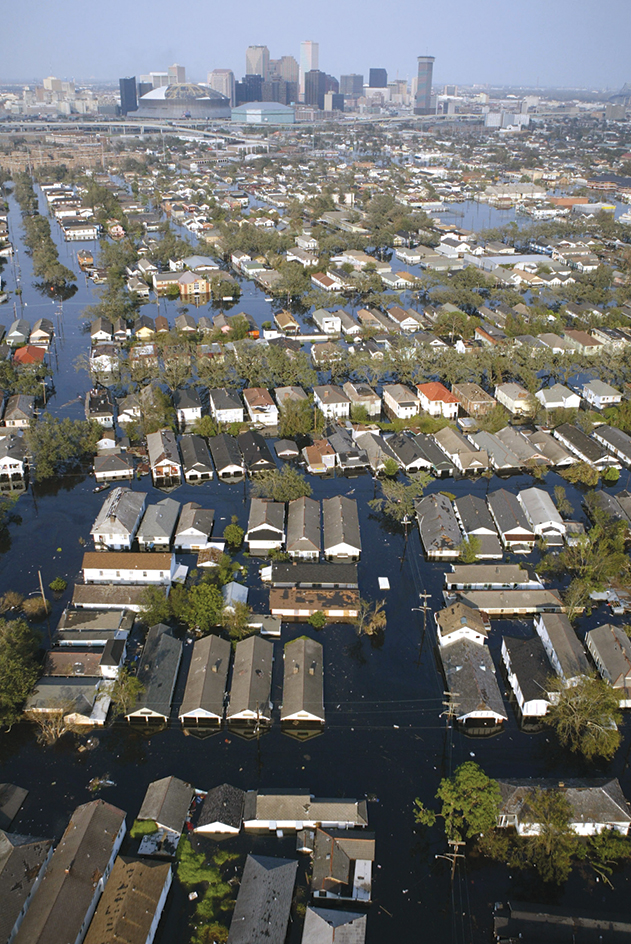
In June 2006, Louisiana Governor Kathleen Blanco ordered National Guard members and state police troopers to New Orleans to help the city’s police fight a growing crime problem. Mayor Ray Nagin had requested the help because of an increase in murders, burglaries, and other crimes. Nagin and other city officials feared that the recovery of New Orleans could be hindered if people believed the city had become too dangerous. National Guard patrols in the city ended in 2009.
In August 2006, Orleanians marked the first anniversary of Hurricane Katrina. Bells rang throughout the city at the time the city’s levee system had failed one year earlier. Some parts of the city appeared prosperous and back to normal, but others remained full of debris and largely deserted. In some neighborhoods, such basic services as water, electric power, and garbage collection were unreliable. Much of the money the federal government set aside for rebuilding New Orleans remained unspent.
In September 2006, the Louisiana Superdome reopened for the first time since it was damaged by Hurricane Katrina in 2005. The damaged stadium served as a temporary shelter in the days after the storm. While it underwent repairs, New Orleans teams played in other facilities. Many people viewed the Superdome’s reopening as a symbol of the city’s recovery.
In March 2007, New Orleans unveiled a detailed plan for rebuilding the city. The plan included steps to improve the city’s schools, roads, and hospitals. In May, Mayor Ray Nagin said the city needed more aid from federal and state governments to overcome its problems, which included a depleted police force, a failing health care system, and a number of still-devastated neighborhoods. Nagin said the city’s successes included a revived French Quarter and a steadily increasing population. In August 2007, Orleanians and government officials marked Hurricane Katrina’s second anniversary. President George W. Bush and Governor Blanco toured the city and highlighted reopening schools and businesses, and improvements in the city’s levee system, as signs of progress.
In late August 2008, Mayor Nagin ordered a mandatory evacuation of the city as Hurricane Gustav approached the Gulf Coast. The hurricane caused major damage throughout Louisiana, but few deaths, and New Orleans was spared from widespread flooding. Less than a week after he issued the evacuation order, Nagin allowed residents to return to the city.
By the mid-2010’s, the U.S. Army Corps of Engineers had constructed or improved a 133-mile (214-kilometer) ring of flood defenses around the New Orleans area. The flood defenses, which include a 2-mile (3.2-kilometer), 26-foot (8-meter) high floodwall on the eastern edge of the city, are meant to protect vulnerable neighborhoods from storm surges brought on by hurricanes.
Mitch Landrieu, who had served as Louisiana lieutenant governor, served as mayor from 2010 to 2018. His father, Moon Landrieu, had been the city’s mayor from 1970 to 1978.
